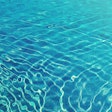![[Photo courtesy of Life Saver Pool Fence Systems]](https://img.athleticbusiness.com/files/base/abmedia/all/image/2019/09/ab.Aquatics919_feat.png?auto=format%2Ccompress&q=70&w=400)
Lifeguards might be considered specialized guardian angels, keeping catastrophe at bay and providing peace of mind for aquatics facility patrons and operators alike. However, lifeguards aren't omniscient beings with supernatural gifts of sight — they are, in many cases, teens or young adults with a high level of personal responsibility and limited authority to make positioning changes to increase their own efficacy.
After a five-year, double-blind study in which her team evaluated trends in aquatic recreation and how those trends affect lifeguards' vision, 40-year aquatics industry veteran Maria Bella of Aqua Conscience determined that many lifeguards are being set up to fail — and she personally knows guards who have carried the guilt of failure with them for life. With the development of Aqua Conscience's three-dimensional ANGELS — Area Notification Gear for Effective Lifeguard Surveillance — devices, Bella set out to rectify the issues common to lifeguard surveillance stations and formations and give guards a fighting chance when it comes to keeping watch over every swimmer in their designated area.
Over the course of her work investigating drowning incidents, Bella has seen evidence of a disturbing pattern. "One of the things I've seen through many investigations is that we have very well-intentioned lifeguards scanning the way they think they should be scanning and sitting where they've been told to sit, and they're set up for failure," she says. "They cannot identify a drowning victim throughout their entire assigned zone because either the chairs are too low, they're in the wrong position, or the lifeguards are doing things like counting heads rather than scanning all the way to the bottom of the pool in a consistent manner using long-standing, highly-regarded search methodology."
The ANGELS devices are designed to test lifeguards' vision throughout their assigned surveillance zone in three dimensions. "If they only have a two-dimensional view, they can't tell if somebody's struggling or playing," Bella says. "They need to be able to see in three dimensions. The ANGELS devices allow the lifeguards to sit where they're told to sit and know immediately either, yes, they can see their entire zone in three dimensions, or no, they can only see so far — so the zone needs to be smaller or they need to be higher."
![ANGELS Devices help determine the necessary vantage point to view an object in three dimensions. [Photos courtesy of Aqua Conscience]](https://img.athleticbusiness.com/files/base/abmedia/all/image/2019/09/ab.Aquatics919a.png?auto=format%2Ccompress&fit=max&q=70&w=400) ANGELS Devices help determine the necessary vantage point to view an object in three dimensions. [Photos courtesy of Aqua Conscience]
ANGELS Devices help determine the necessary vantage point to view an object in three dimensions. [Photos courtesy of Aqua Conscience]
Setting up for success
According to Bella, the industry has made a shift in the past few years to address the drowning crisis by moving toward more shallow-water pools. This also brought in a generation of lower lifeguard stands. "As soon as you put lifeguards on low stands, the optics change. Glare is a bigger problem, turbulence is a bigger problem, and line-of-sight obstructions — patrons in the way of the lifeguard's line of sight — are a much bigger problem. So we went with shallow water and low chairs, and we still have drownings in the shallow water because the lifeguards aren't positioned where they can identify a submerged victim because their zones are too big or their chairs are too low," she says. "They can keep their low chairs, that's fine, but they're going to need more lifeguards because the zones have to be smaller."
Constructed with low-profile weights to maintain their position on the bottom of the pool and conspicuous orange wings that float in water to form a three-dimensional shape, the ANGELS devices address two concerns at once, ensuring that lifeguards are properly positioned and that they're scanning thoroughly. If the guards can see the devices in three dimensions, Bella says, their eyes will be able to capture enough information from any object at or below the surface of the water so the brain can accurately interpret it.
The devices can — and should — be used during open swim, swim team, swim lessons and any other regularly scheduled programming to test visibility during real-world conditions. "It was engineered to be pool- and patron-friendly, and the reason is that prior to this, what the industry used for testing were mannequins — and patrons don't like seeing mannequins in the water. It's very disturbing to them, even when we say, 'Hey, ignore that body at the bottom of the pool,' it's still very disturbing," Bella says. "The ANGELS devices don't bother patrons, the patrons don't bother them, and the facility can get accurate, reliable results."
In addition to the lifeguard positioning and training tool, Aqua Conscience offers an auditor's kit to enable aquatics facilities to self-audit and train. "Both of these products allow for scientifically auditing lifeguard zone boundaries and validating lifeguard chair height and position," Bella says. "Additionally, the lifeguard positioning and training tool allows facilities to train their lifeguards to scan every cubic foot of water in the assigned surveillance zone. They don't need to have us come out and do it. They can do it themselves quickly and easily and very inexpensively."
To put things in perspective, hosting an auditor can run up to $30,000 depending on travel costs, while a simple audit can be completed with seven ANGELS devices for roughly $600, and the scanning training can be completed with 35 ANGELS devices for $2,500. The ANGELS devices help make sure the guards can do what Bella calls their "critical duty."
However facility owners decide to use this tool, Bella makes it clear that she has one goal — to set lifeguards up to succeed, for their own sake, as well as that of the patrons. "The whole reason I spent the time doing the study and developing these devices is because we don't want to have drownings in pools where lifeguards are on duty," she says. "That's a given, but then I see the other side of it, where the lifeguard is set up to fail. They don't know that they're set up to fail. Somebody dies on their watch and the lifeguard is traumatized. And it changes their life."
![The Life Saver Pool Fence is sturdy and child-safe, with latches 54-inches above grade. [Photo courtesy of Life Saver Pool Fence Systems]](https://img.athleticbusiness.com/files/base/abmedia/all/image/2019/09/ab.Aquatics919b.png?auto=format%2Ccompress&fit=max&q=70&w=400) The Life Saver Pool Fence is sturdy and child-safe, with latches 54-inches above grade. [Photo courtesy of Life Saver Pool Fence Systems]
The Life Saver Pool Fence is sturdy and child-safe, with latches 54-inches above grade. [Photo courtesy of Life Saver Pool Fence Systems]
Layers of protection
Juliene Hefter, owner of Safety First Aquatics and executive director of the Association of Aquatic Professionals, is another industry veteran who deals regularly with the fallout of drownings and catastrophic injuries occurring at aquatics facilities. Through her work with the AOAP, Hefter promotes the organization's Respect the Water campaign by providing swim facilities with gear, grant funding and literature to help educate both operators and patrons on drowning prevention. For Hefter, it all comes down to layers of protection.
"It's just an opportunity for facilities to use our research to make sure that people who are coming to their facilities are aware of drowning prevention and how quickly drowning can happen, and the layers of protection that you can put in place," she says. "When we talk about drowning prevention education, a lot of times we're talking about the children and getting them swim lessons, which is great — but parents and caregivers don't realize how quickly drowning can happen and all the layers of protection you need to put into place to prevent that."
For Hefter, those layers include the essentials such as supervision, life jackets and knowing the water conditions, in addition to tech-enhanced aids such as door alarms, non-slip flooring, specialized fencing and electronic surveillance.
According to Hefter, drownings occur at a particularly high rate when children are able to access water without a caregiver's knowledge. "A lot of times they end up in the water, and we don't even know they're there — so the physical barriers we put in place really are an extra layer of protection. It's a precautionary measure that we can use to just make sure that we're taking all the steps necessary to keep everybody safe."
Lifeguards are there to help ensure the safety of everybody and enforce the rules — but even if they're doing their job well and paying close attention, tragedies can still happen. "A lot of times, a drowning occurs around people who are observing it, and they don't even realize what's happening," Hefter says. "It happens so quickly, and it's not like the textbook. If somebody's drowning, they aren't going to scream and yell and flail their arms — it doesn't work that way."
More from AB: Electronic Surveillance Technology for Drowning Detection
Back to basics
Emerging technologies that add an extra layer of peace of mind to an already well-trained aquatics staff include options in varied price points to fit any facility, from wearable wrist bands or headgear for patrons to alarms that float right on the pool surface to alert operators to unexpected disturbances.
"We talk about so many things that can distract lifeguards, or if you're watching something but you're looking at it for so long, you may not notice something," Hefter says. "That can and does happen, so having that extra layer of protection of an alarm going off if there's somebody under the water and not moving for a certain number of seconds, those things are great. They can't hurt."
Another layer of protection that has been around for decades but is too often underutilized — at least in a commercial setting — is a temporary or mobile pool fence. Eric Lupton, president of Life Saver Pool Fence Systems, describes a product that can be rearranged to exclude unprogrammed pool areas from public access and stored easily with minimal space required when not in use.
Mesh fencing provides a versatile environment that reduces the area that patrons can roam during lighter-staffed, specialized programming hours, while still allowing guards and supervisors to see into the closed-off area. These fences are constructed of newly patented solid poles with mesh between that can be rolled up for transportation or storage.
"It can be taken up and down pretty easily," Lupton says. "It has a self-closing, self-latching gate that is 54 inches above grade, so it's above child height. You have to push a button down to undo the latch, so it's hard to remove for a kid. There are lights that can go on top that are solar activated."
While their main customer base is composed of private backyard pools, Lupton says the fencing is put to good use in a commercial installation and can hold up to the heavier wear and tear. "We've even done situations at daycares," he says, "where they install it for multiple layouts so they can block off one section or another."
Wearable tech
While fencing and non-slip flooring are designed to prevent accidents before they happen, newer technologies are aimed at boosting the efficiency of a facility's already established emergency action plan. One such innovation by WAVE Drowning Detection Systems employs comfortable wearable tech that can be worn directly on the head or clipped onto the swimmer's existing goggles. The device tracks how long a swimmer's face is submerged and sends a dual alert to a central tower and to bracelets worn by the guards on duty.
According to Elena Helgiu, who handles marketing and business development at WAVE Drowning Detection Systems, the company's mission is to introduce widespread technology to solve the problem of drowning. While the systems have not yet fully hit the market, WAVE hopes to offer an affordable extra layer of protection that can be implemented in recreational aquatics facilities of any type or size. "This is meant to empower lifeguards to provide the safest possible swim for kids or patrons of an aquatics facility," she says.
The creation of the WAVE system, Helgiu adds, was prompted by the nonfatal drowning of company co-founder Dave Cutler's family friend at a local pool. "It was obviously very upsetting to that entire community, and Dave realized that there's no widespread technology applied to the problem of drowning."
Helgiu notes that the WAVE technology can be used comfortably by child and adult swimmers. "It's really meant for anybody; and a huge majority of drownings occur under some form of adult supervision," she says. "You never know what can happen, and the scary part is that drowning is very quiet, unlike what is commonly thought to be true. The person starts to panic and the body slips silently under water. Most people cannot even identify a drowning victim when it's happening in front of them, whether child or adult."
The most important thing when it comes to introducing WAVE technology to a pool with existing lifeguarding staff and safety protocols already in place, Helgiu says, is to make sure staff will remain diligent and take each sounding of the alarm seriously. "It should be treated the same as a fire alarm," she says.
As of now, WAVE Drowning Detection Systems do not employ positioning technology, though that development may be an option in the future. This means the system relies on active lifeguards who will respond immediately to an alert by looking in the pool to see where the incident might be occurring.
![The WAVE portable alert tower can be placed anywhere it can be easily seen. [Photos courtesy of WAVE Drowning Detection Systems]](https://img.athleticbusiness.com/files/base/abmedia/all/image/2019/09/ab.Aquatics919c.png?auto=format%2Ccompress&fit=max&q=70&w=400) The WAVE portable alert tower can be placed anywhere it can be easily seen. [Photos courtesy of WAVE Drowning Detection Systems]
The WAVE portable alert tower can be placed anywhere it can be easily seen. [Photos courtesy of WAVE Drowning Detection Systems]
AI scanning and positioning
While wearable tech may be in the development stage as far as distressed swimmer positioning is concerned, certain surveillance technologies have advanced to the point of being able to turn a lifeguard's head in the right direction to answer a distress call. The AngelEye LifeGuard, for example, uses underwater cameras coupled with artificial intelligence software to monitor swimmer activity, detect potential problems and then notify staff through wireless wearable or handheld tech, similar to the WAVE system. However, as the cameras already know the position of the submerged swimmer in question, AngelEye is able to show guards an image of the potential risk on a small personal screen positioned on a smart watch or handheld device.
According to the company's website, the surveillance system monitors submerged swimmers for a lack of "purposeful movement," or strokes that are sufficient to bring the face up to breathe, and alerts guards when a swimmer appears to have been struggling for more than seven seconds. This advanced warning system allows guards to respond to incidents before the process of drowning has even begun.
Of her quest for a more effective lifeguarding configuration at existing pools, Maria Bella of Aqua Conscience says, "For a long time, we told lifeguards, 'If you see a blotch that looks out of place, that could be a drowning victim, go for it.' And then for a long time we told lifeguards, 'If you don't know, go.' And none of those things worked." Bella and others in the industry working to introduce new and better aquatics safety technology just want to make sure that the effort and investment made by facility operators get results.
While having well-trained guards in place at an aquatics facility is a great step toward maintaining a safe recreation environment, they need additional help. Preliminary safety measures, such as sturdy fencing, non-slip flooring and clearly posted rules, can help prevent incidents from occurring in the first place, while new technologies are being developed to help lifeguards close the gaps on the other end — when an accident has occurred, and staff needs to respond as quickly and efficiently as possible. These layers of protection can work together with guards to form a seamless defense against drowning.
"We talk about all these layers of protection and layers of supervision, because we don't want to have just one in place," Hefter says. "We want to do everything we potentially can to ensure that everybody has a safe time at the pool."
This article originally appeared in the September 2019 issue of Athletic Business with the title "From fencing to artificial intelligence: Layers of protection for seamless aquatic safety." Athletic Business is a free magazine for professionals in the athletic, fitness and recreation industry. Click here to subscribe.





































